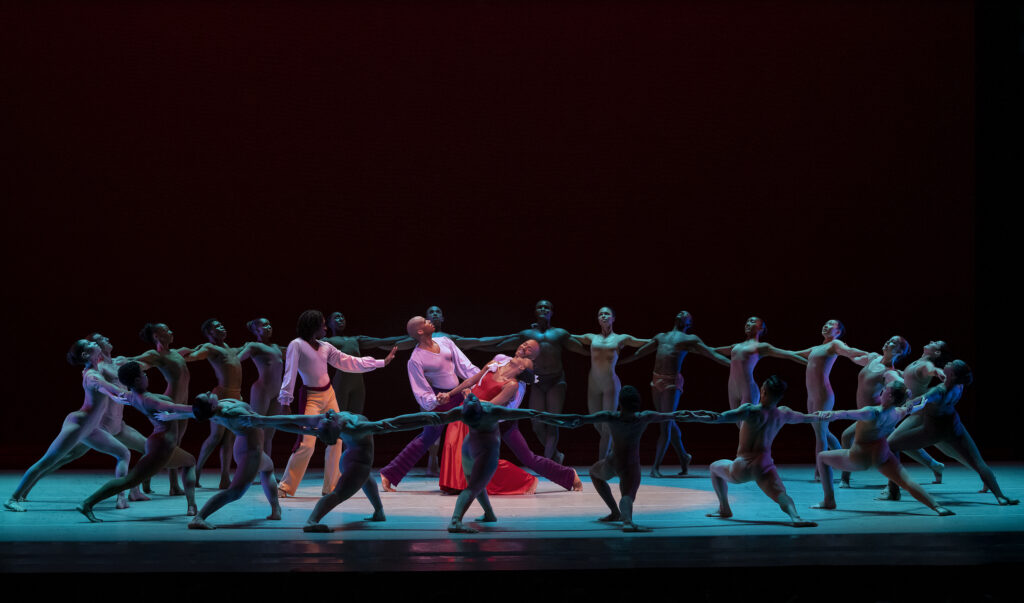There’s an inherent pressure anytime a brand new dancer breathes life into an current work onstage. Decoding a task is at all times a push and pull, says Ronni Favors, rehearsal director for Alvin Ailey American Dance Theater, between what the performer brings and what was already there. “Alvin mentioned, ‘I like dancers who can colour motion, who can convey themselves to the motion,’ ” remembers Favors, a former Ailey dancer herself. “He additionally mentioned, ‘Dancers, please do my choreography.’ ”
It could really feel like a tall order to do each, whether or not you’re portraying a personality in a full-length narrative ballet, tackling rep by a late icon like Ailey, George Balanchine, or Martha Graham, or moving into a brand new forged of a latest work by a up to date choreographer. Hanging the appropriate steadiness is a fragile dance that is dependent upon many components, together with the piece, the dancer, and the rehearsal director, répétiteur, or coach guiding them by way of the method.
Be Curious and Brave
You may’t interpret what you don’t perceive. Favors tells dancers about Ailey and different choreographers whose work she’s staging, providing her personal recollections and tales. However “a part of my mission is to not solely share what I do know, however to encourage dancers” to hunt out extra, Favors says, resembling a choreographer’s influences and coaching and the context during which they had been creating a selected piece.

Being curious within the rehearsal course of takes braveness, as does experimenting with methods to make a task your personal. You may play with how you employ your breath, what you do along with your eyes and focus, and the way you carry your neck and higher physique, says Favors. You can even make musical decisions, says Susan Shields, director of George Mason College’s Faculty of Dance, like whether or not you hit the highest or again a part of a beat.
As a dancer, you need to have an opinion or a standpoint, says Julie Kent, former American Ballet Theatre principal dancer and present Houston Ballet co-artistic director, and “be courageous within the exploration course of, as a result of that’s the place the true discoveries are made.”
Join Feelings and Experiences
When Shields first joined the Lar Lubovitch Dance Firm, she needed to step out of the consolation zone of her ballet coaching. “I did my greatest to look identical to the lady subsequent to me,” she says. When she had a possibility to bop the pink lady in Lubovitch’s A Brahms Symphony, she initially tried to repeat the way in which she’d seen her dance idol, Christine Wright, do it.
However one of many keys to decoding a task efficiently, Shields discovered, is to let your self be weak. On this case, she needed to open herself up and faucet into grief. “In case you enable your self to emotionally go there whilst you’re dancing it, it turns into your personal,” she says. Even should you’re doing the identical steps, “that mechanically makes it completely different.”
Favors discourages dancers from plotting out too inflexible a story for themselves in works that don’t have one. “I encourage them to create extra of a temper board,” she says, drawing on what they’ve discovered concerning the choreographer and work and making connections to their very own lived experiences. “You’re making a world you could imagine in, and while you do this, we see it,” she says.
To efficiently conjure that world and to convey trustworthy expression to your motion, Favors says, you additionally must get out of the studio and stay. She remembers Ailey telling her early on to “get your coronary heart damaged, exit, make errors, meet individuals, do issues, fall in your face, get again up.” As a result of as he put it, “you can not dance about dance. It’s a must to dance about life.” The extra experiences you need to draw from and the extra actively you’ll be able to interact your creativeness, the higher you’ll be able to develop a world onstage—and the extra you may make a task your personal.
Belief the Collaboration
“Even when a dance is about,” Favors says, “it’s nonetheless a residing, respiration entity and it’s inhabited by residing, respiration entities.” Until you’re performing a solo, your interpretation can be influenced by your fellow dancers. In a narrative ballet like Manon, for instance, Kent says the title character will react in a different way if Des Grieux is performed as a hopeless romantic versus a extra aloof suitor.

The opposite, central creative collaboration in growing an interpretation of a task is with the coach, rehearsal director, or choreographer within the entrance of the room. “It’s a must to be speaking with that particular person. It’s a must to be prepared to take what they’re asking for, put it into your thoughts and physique, and then you definitely give one thing again,” Kent says. “The extra you give them again, the extra they’ll provide you with again, since you encourage a dialogue.”
They’re your sounding board and safeguard as you determine the place the boundaries of particular person expression are. “In the event that they’re saying, ‘Sure, sure, extra, go for it,’ ” Kent says, “then that’s your path. In the event that they’re like, ‘I advised you that is seven-eight, and you aren’t doing it,’ then it’s on seven-eight, there’s no interpretation,” she says. “On the finish of the day, you need to construct that belief in your self and belief in the person who you’re working with.”
Time spent within the rehearsal course of on the nuances of expression is important to creative development and improvement. “That efficiency lasts for quarter-hour, 20 minutes, 30, an hour,” says Kent. “The precise work—the method—is the reward. So find it irresistible and revel in it.”

